"My favourite Polgar game"
Robert Ris comments on Vadim Ruban – Judit Polgar (Groningen PCA 1993)
1.d4 Nf6 2.Nf3 g6 3.c4 Bg7 4.Nc3 0–0 5.Bg5 A relatively solid line, while the main lines of the KID are starting with 5.e4 5...d6 6.e3 In more recent years Mamedyarov has given preference to 6.Qd2
6...Nbd7
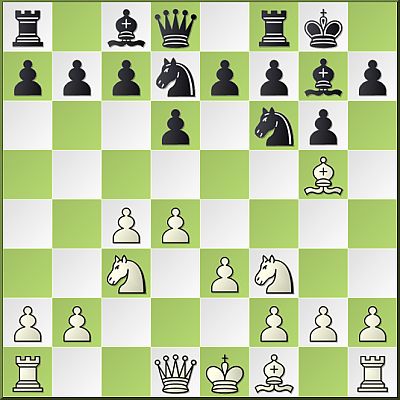
There are different setups possible, but true to her style, Polgar proceeds in the spirit of this opening.
7.Be2 e5 8.0–0 h6 9.Bh4 g5 Sooner or later this moves has to played in order to get of the pin.
10.Bg3 Nh5 11.dxe5
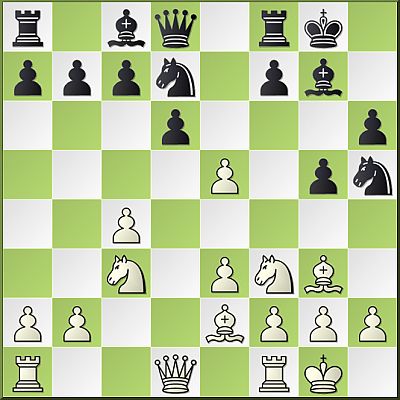
Nxg3 11...dxe5?! allows 12.Bxe5! Nxe5 13.Nxe5 Bxe5 14.Bxh5 and White is a pawn up.
12.hxg3 dxe5 Objectively a better idea is, but then 12...Nxe5 13.Qc2 followed by Rad1 White can claim an edge.
13.Qc2 f5 14.Rad1 c6 15.Nd2
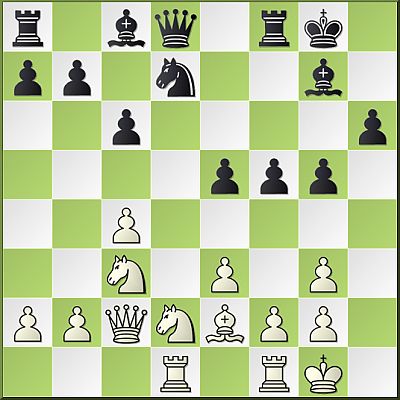
The critical moment of the game. White has a very solid position and hopes to exploit Black's aggressive expansion on the kingside. However, in the present game Polgar shows Black's attacking potential in a very convincing way. One the of main problems for White are the lack of nice squares for the knights and in order to activate these pieces White should opt for 15.g4! fxg4 16.Nd2 (16.Nh2 has been played in a few earlier, games, but on d2 it's more active) 16...Nf6 17.Nde4 Qe7 18.c5! offers White tremendous play on the light-squares, while the d6–square is a great outpost for either the knight or rook (to double on the d-file). In the game Ruban first brings the knight to d2, preparing g3–g4 with the idea of controlling the e4–square, but Polgar has a creative solution thwarting White's plan.
15...h5!? 16.e4 The point of Black's last move is that 16.Bxh5? fails to 16...g4 17.e4 Qg5 and the bishop is trapped.
16...f4 17.gxf4? Perhaps more stubborn is 17.Bxh5 though after 17...Nf6 the minus pawn isn't really felt.
17...gxf4
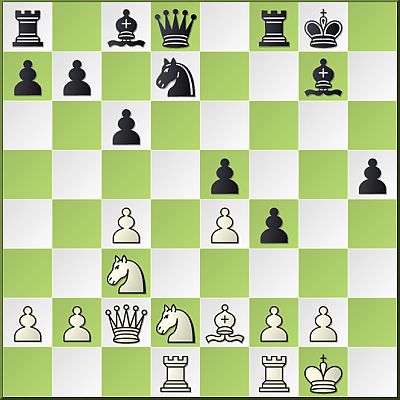
Recapturing away from the centre with 17...exf4! is a better option, opening up the diagonal for the dark-squared bishop and clearing the e5 square for the knight. After 18.Bxh5 Ne5 19.Nf3 Qe7 Black is in great shape. One of the plans is to use the h-file for a kingside attack.
18.Bxh5 Grabbing such a pawn is asking for problems, as the opening of the h-file could only really favor Black. A more sound option is 18.b4!? planning c5, Nc4 etc.
18...Qh4 19.Bf3 In case of 19.Be2 a strong idea is 19...Rf6 20.Nf3 Qh7 followed by Rh6 when the threats against the white king become unbearable. (20...Qh5?! 21.Nd4 and the knight can be installed on f5.)
19...Nf6 19...Rf6? is less impressive this time, because after 20.Rfe1 Rh6 21.Kf1 the white king can still be evacuated.
20.Qb3

Kh8 A useful move, as the king leaves the a2–g8 diagonal and the rook may join the attack along the g-file.
21.Rfe1 Ng4! 22.Bxg4 Bxg4 23.f3 23.Nf3? is strongly met by 23...Bxf3 24.gxf3 Qh3! and since the king can't escape mate within a few moves can't be avoided.

23...Rad8! Another fantastic move: ignoring your opponents threat by generating a counterattack. After something like 23...Be6?! 24.Kf1 followed by Ke2 White still puts up resistance.
24.Nf1? White succumbs to the pressure.
24.fxg4 is met by 24...Rxd2! 25.Rxd2 Qxe1+ and Black will be a rook up.; White's best chance is to overprotect the knight on d2, but then after 24.Qc2 Be6–+ White can never take on b7 any longer, while Black's attack simply continues (Rg8, Bf8–c5 etc).
24...Bxf3! 25.gxf3 Rg8! 25...Bf6? isn't clear at all, since after 26.Nh2! Rg8+ 27.Kh1 Rd2 (27...Qh3? 28.Qc2+–) 28.Re2! everything is well covered. (28.Rxd2? Qxe1+ 29.Nf1 Qxf1+ 30.Kh2 Qg1+ 31.Kh3 Qg3#)
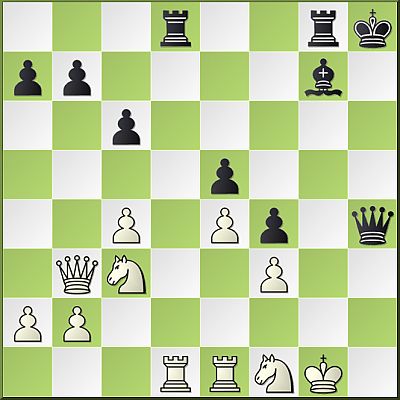
26.Nh2 26.Rxd8 runs into 26...Bf8+! 27.Ng3 Qxg3+ 28.Kf1 Qg2#
26...Bf8+ Another advantage to start with Rg8 is that the bishop can join the attack via c5.
27.Kh1 Bc5 28.Re2 28.Qc2 Qg3! with the idea to take on d1, deflecting defenders from either the g2 or g1 square. (28...Rd7!? with the idea of Rdg7 also suffices) 29.Rc1 Rd7 30.Na4 Bf2 wins for Black.
28...Rd7! 29.Na4 29.Rxd7 Rg1#

29...Bf2! and here White had seen enough, as White can't do anything against the threat of ...Qxh2+, e.g. 30.Qc2 (30.Rxf2 Qxf2 31.Ng4 Rh7+ and mate.) 30...Qxh2+! 31.Kxh2 Rh7#
0–1
This and 22 other brilliant games by Judit Polgar - annotated by Adhiban Baskaran, Michal Krasenkow, Karsten Müller, David Navara and many others - can be found in the "Special" of ChessBase Magazine #204!
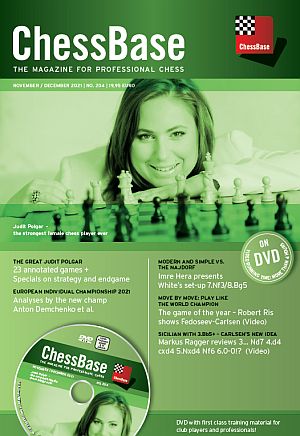
Order now at the ChessBase Shop !
































